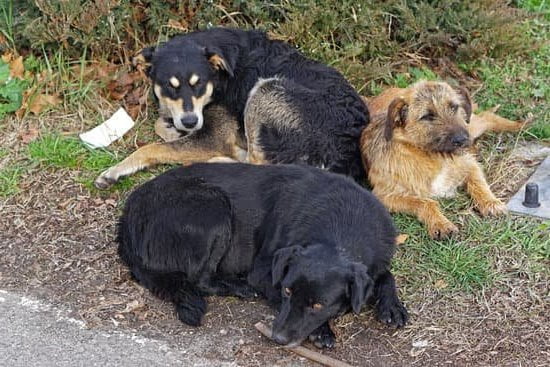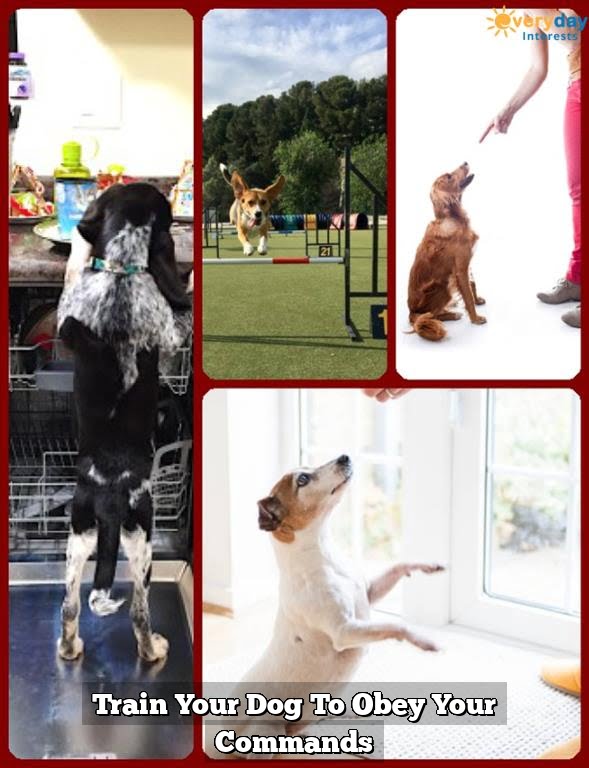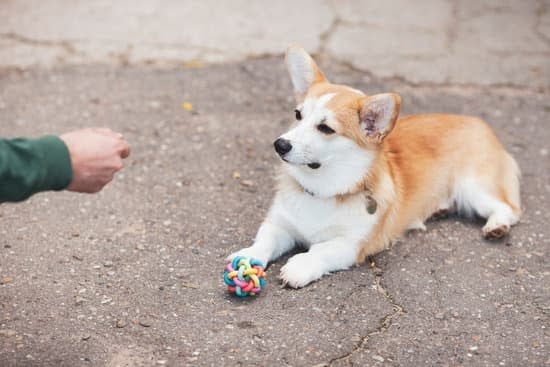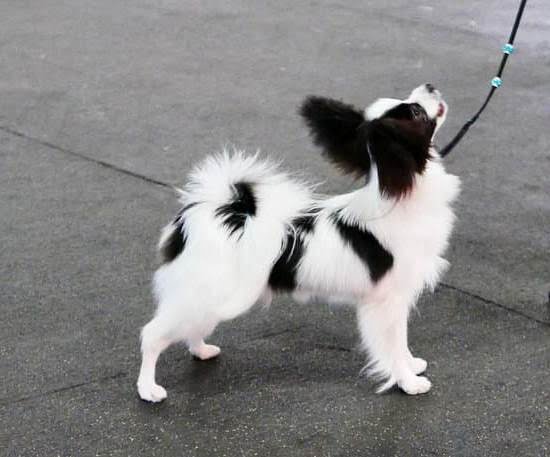Are you wondering how to train your dog to go camping? Camping with your furry companion can be a rewarding and enjoyable experience for both of you. However, just like any outdoor adventure, proper preparation is key to ensuring a safe and comfortable trip for your pet.
When it comes to choosing the right camping site for your dog, there are several factors to consider. Look for dog-friendly campgrounds that allow pets and have amenities like designated pet areas, waste disposal stations, and nearby hiking trails. Ensure that the campground’s rules and regulations align with your dog’s needs, such as leash requirements or restrictions on certain breeds.
Additionally, consider the terrain and weather conditions of the camping site. Some dogs may prefer sandy beaches for plenty of water play while others might enjoy wooded areas with shade and opportunities for exploring. Whether you opt for a remote wilderness site or a bustling campground, make sure it suits your dog’s comfort level and activity preferences.
Before embarking on your camping trip, familiarize yourself with local wildlife and potential hazards in the area to keep your dog safe. By carefully selecting a suitable camping site that caters to your dog’s needs and interests, you can set the stage for an enjoyable outdoor adventure together.
Essential Gear and Supplies for Camping With Your Dog
When preparing to take your dog camping, it is essential to have the right gear and supplies to ensure a safe and enjoyable experience for both you and your furry friend. Here are some must-have items that you should consider packing for your next outdoor adventure with your canine companion:
- Collapsible water bowl or pet-friendly water bottle: Keeping your dog hydrated during a camping trip is crucial, so having a portable water bowl or a specialized water bottle will make it easier for them to drink on the go.
- Dog bed or camping pad: Providing a comfortable sleeping area for your dog at the campsite is important for their rest and relaxation. Consider bringing along a cozy dog bed or a camping pad to keep them comfortable throughout the night.
- Reflective collar and leash: A reflective collar and leash will help keep your dog visible during nighttime walks or in low-light conditions, ensuring their safety while exploring the campsite.
Additionally, packing extra food, treats, poop bags, a first aid kit specifically designed for pets, and any necessary medications will help ensure that your dog’s basic needs are met while camping. Remember to consider the weather conditions at the campsite when packing gear for your dog – items like cooling vests or booties may be necessary depending on the climate.
It is also important to check if the campsite you plan to visit has any specific rules or regulations regarding pets. Some places may require dogs to be on a leash at all times, while others may have designated off-leash areas.
Being prepared with the right gear will help ensure that you can comply with any campground rules while keeping your dog safe and happy during your outdoor adventures. With proper preparation and the right supplies, you can set yourself up for a successful camping trip with your beloved canine companion.
Prepping Your Dog for Camping
When preparing to take your dog camping, it’s important to ensure they are physically and mentally ready for the experience. One of the first steps is to make sure your dog is in good health and up to date on all vaccinations.
If your dog has any health issues or special needs, consult with your veterinarian to determine if camping is a suitable activity. Additionally, consider your dog’s age, fitness level, and breed characteristics when planning a camping trip.
Physical preparation for camping with your dog can include gradually increasing their exercise leading up to the trip. This can help improve their endurance for hiking or other outdoor activities you have planned. Mental preparation is also key, as unfamiliar environments and new experiences can be stressful for some dogs. To help them adjust, consider setting up a tent in the backyard for practice nights or taking short day trips to get them used to being outdoors.
Incorporating training sessions into your pre-camping routine can also be beneficial. Teach or reinforce basic commands such as “sit,” “stay,” “come,” and “leave it” so that you have better control over your dog during the camping trip.
Positive reinforcement techniques, such as treats and praise, can help solidify these commands. By taking the time to physically and mentally prepare your dog for camping, you can help ensure a safe and enjoyable experience for both of you in the great outdoors.
| Physical Preparation Tips | Mental Preparation Tips |
|---|---|
| Gradually increase exercise | Set up tent in backyard for practice nights |
| Consult with veterinarian | Take short day trips outdoors |
| Consider age, fitness level, and breed characteristics | Incorporate training sessions with basic commands |
Basic Commands Your Dog Should Know Before Going Camping
Before embarking on a camping trip with your furry companion, it’s essential to ensure that your dog is well-trained in basic commands. These commands will not only make your camping experience more enjoyable but also keep your dog safe in unfamiliar surroundings. Here are some basic commands that your dog should know before heading out into the great outdoors:
- Sit: Teaching your dog to sit on command can be useful when you need them to stay put while setting up camp or preparing meals.
- Come: This command is crucial for recall in case your dog wanders off while exploring the campsite or encounters wildlife.
- Stay: Training your dog to stay in one place can prevent them from getting into dangerous situations, especially around campfires or near cliffs.
In addition to the basic commands mentioned above, it’s also beneficial to teach your dog some specific camping-related commands such as “leave it” to prevent them from interacting with potentially harmful objects or animals they might encounter in the wilderness. Remember, consistency and positive reinforcement are key when training your dog for camping adventures.
- Start by practicing these commands in a familiar environment before gradually introducing distractions such as outdoor sounds or sights.
- Use treats and praise to reward good behavior and encourage obedience during training sessions.
- Be patient and understanding, as every dog learns at their own pace. Consistent practice and reinforcement will help solidify these commands before going on a camping trip.
By ensuring that your dog is well-versed in these basic commands, you’ll not only have a more enjoyable camping experience but also establish a stronger bond with your furry companion while exploring the great outdoors.
How to Introduce Your Dog to the Camping Environment
Introducing your dog to the camping environment is an essential step in ensuring a successful and enjoyable experience for both you and your furry friend. One of the first things to consider is acclimating your dog to unfamiliar sights, sounds, and smells that they may encounter while camping.
Taking short walks in wooded areas or visiting local parks can help prepare them for the natural surroundings they will experience while camping. Additionally, practicing setting up a tent in your backyard or a familiar outdoor space can help your dog feel more comfortable with their temporary living quarters.
Another important aspect of introducing your dog to the camping environment is socialization with other dogs and people. If your dog is not used to being around other animals or strangers, it’s important to gradually introduce them to new experiences before heading out on a camping trip.
This can help prevent anxiety or aggression towards other campers and their pets while you are outdoors. Organizing playdates with friends who have dogs or attending obedience classes can be beneficial in socializing your pup.
Furthermore, exposing your dog to different terrains and weather conditions is crucial in preparing them for a camping adventure. Take them on hikes on various types of trails, from easy paths to more rugged terrain, so they can become accustomed to walking on different surfaces.
Additionally, practicing walking in rain or shine can help them adjust to changing weather conditions that may arise during your camping trip. By gradually exposing your dog to new environments and experiences, you can build their confidence and ensure a smooth transition when it comes time to hit the great outdoors together.
Safety Tips for Camping With Your Dog
When it comes to camping with your four-legged friend, safety should always be a top priority. Here are some essential safety tips to keep in mind on your camping trip with your dog:
First and foremost, ensure that your dog is properly identified with a collar, ID tag, and microchip. In case your dog gets lost during the camping trip, these identification measures will increase the chances of a safe return.
Another important safety tip is to keep your dog on a leash at all times while in the campground and on trails. This will prevent them from running off or getting into potentially dangerous situations with wildlife or other campers.
Additionally, make sure to bring along a pet first aid kit for any minor injuries that may occur while camping. This kit should include items such as bandages, antiseptic wipes, and tweezers for removing ticks or splinters.
Lastly, be mindful of the weather conditions during your camping trip and ensure that your dog has access to shade and plenty of water to prevent heatstroke. If you’re camping in colder weather, provide appropriate protection for your dog against the cold by bringing along a coat or jacket for them.
| Safety Tips | Details |
|---|---|
| Proper Identification | Collar, ID tag, microchip |
| Leash Your Dog | Prevent running off or encounters with wildlife |
| Pet First Aid Kit | Bandages, antiseptic wipes, tweezers |
| Weather Conditions Awareness | Access to shade/water in hot weather; appropriate protection in cold weather |
Handling Food and Water for Your Dog While Camping
Proper Nutrition and Hydration
When preparing to take your dog camping, it is essential to consider their food and water needs. Just like humans, dogs require proper nutrition and hydration, especially when in a more active outdoor setting.
Make sure to pack enough of your dog’s regular food to last the duration of the camping trip. It is also a good idea to bring along some treats for positive reinforcement during training or in case your pup needs a little extra encouragement on the trails.
In terms of water, it is crucial to ensure that your dog stays hydrated throughout the trip. Bring an adequate supply of fresh water for your dog and make sure they have access to it regularly. Consider bringing along a collapsible bowl or portable water dispenser for easy access to water while hiking or relaxing at the campsite.
Feeding Schedule and Portion Control
Maintaining a consistent feeding schedule while camping can help regulate your dog’s digestion and keep them comfortable throughout the trip. Stick to their usual feeding times as much as possible to avoid any digestive issues. Additionally, be mindful of portion control, as dogs tend to burn more calories when exploring new environments and engaging in outdoor activities. Adjust their food intake accordingly based on their activity level.
Food Storage and Waste Management
Properly storing your dog’s food while camping is important to prevent it from spoiling or attracting unwanted wildlife. Invest in airtight containers or resealable bags to keep your dog’s food fresh and secure from critters.
When disposing of uneaten food or waste, be sure to follow Leave No Trace principles by packing out all trash, including any leftover dog food cans or packaging materials. Keeping the campsite clean not only preserves nature but also ensures the safety of your furry companion.
Nighttime Routine and Sleeping Arrangements for Your Dog
When it comes to camping with your furry friend, ensuring a comfortable and safe nighttime routine and sleeping arrangement is crucial. Dogs are creatures of habit, so establishing a bedtime routine can help them feel secure in unfamiliar surroundings. This section will provide you with tips on how to create an ideal nighttime setup for your dog while camping.
Choose the Right Sleeping Area
Before heading out on your camping trip, consider the sleeping area for your dog. While some dogs may be comfortable sleeping in a tent, others may prefer their own space, such as a travel crate or sleeping pad. It’s important to select a spot that provides enough comfort and security for your dog to rest peacefully throughout the night.
Setting Up a Cozy Bedding
Just like humans, dogs also appreciate a comfy place to sleep at night. Make sure to bring along their favorite bedding or blankets to create a cozy sleeping area for them. Additionally, consider packing an extra blanket or two in case the temperature drops during the night. This will ensure that your dog stays warm and comfortable while sleeping outdoors.
Nighttime Routine
Establishing a nighttime routine can help your dog feel at ease during camping trips. Take your dog for a final walk before bedtime to allow them to do their business and burn off any excess energy. Offer them some water before settling down for the night. Providing your furry companion with consistency and comfort at bedtime will make them more relaxed and ready to rest peacefully under the starlit sky.
Dealing With Wildlife Encounters While Camping With Your Dog
Camping with your dog can be a wonderful experience, creating unforgettable memories and bonding moments with your furry companion. However, one important aspect to consider while out in the wilderness is how to deal with wildlife encounters. It’s crucial to be prepared and know how to protect both yourself and your dog in these situations.
First and foremost, it’s essential to research the common wildlife species in the area where you’ll be camping. Understanding their behaviors and habits can help you anticipate potential encounters and take necessary precautions. Always keep your dog on a leash while hiking or exploring, as this not only protects them but also prevents them from chasing after wildlife.
Another important tip is to properly store food and trash away from your campsite. Wildlife such as bears, raccoons, or coyotes may be attracted to the scent of food, posing a danger to both you and your dog. Be sure to use bear-proof containers or hang food bags high up in trees to deter animals from approaching your campsite.
In case you do encounter wildlife while camping with your dog, remain calm and make yourself appear larger by standing tall and making noise. Keep your dog close by and avoid running away, as this may trigger a chase response from certain animals. By following these safety tips and being prepared for wildlife encounters, you can ensure a safe and enjoyable camping experience for both you and your beloved pet.
Frequently Asked Questions
How Do I Prepare My Dog for Camping?
To prepare your dog for camping, start by ensuring they are up to date on vaccinations and have proper identification. Pack their essentials such as food, water, leash, bed, toys, and any medication they may need. Practice setting up a tent in your backyard to familiarize them with the process.
How Do I Keep My Dog Calm While Camping?
Keeping your dog calm while camping involves creating a comfortable space for them in the tent with their familiar items like bedding and toys. Maintain their routine as much as possible to provide a sense of normalcy. Engage them in activities like hiking or playing fetch to keep them active and happy.
How Do I Get My Dog Used to a Tent?
Getting your dog used to a tent can be done gradually by introducing them to it in a positive way. Start by setting up the tent indoors and allowing them to explore it at their own pace.
Use treats and praise to create positive associations with the tent. Gradually move the tent outdoors for short periods before attempting an actual camping trip.

Welcome to the blog! I am a professional dog trainer and have been working with dogs for many years. In this blog, I will be discussing various topics related to dog training, including tips, tricks, and advice. I hope you find this information helpful and informative. Thanks for reading!





